Japanese Dog Breeds from Akita to Tosa
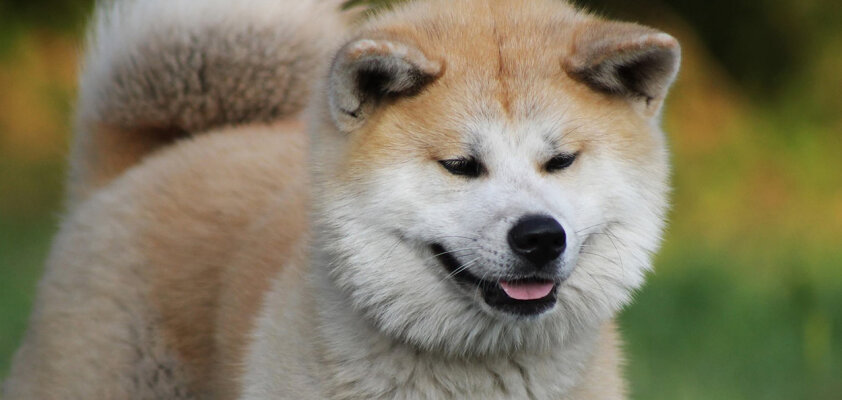
Fluffy fur, curled tails, and pointed ears: not only do Japanese dog breeds have these traits in common, but each breed is unique with its own story to tell. We'll share how to distinguish them and which one might be the best fit for you.
The true legend of Hachiko
Japanese dog breeds are called Nihon Ken 日本犬. The last kanji character can also be read as Inu, which means "dog." Apart from their appearance, Japanese dogs are recognized for their independent and proud nature, making them reserved around strangers. However, they are deeply attached to their families, and that's what has made them famous.
Perhaps the most famous Japanese dog is named Hachiko. Who doesn't know the story of the faithful dog who waited every day for his owner at the station, who never returned? Since it was adapted into a film starring Richard Gere, we empathize with and admire the loyalty of this dog. Meanwhile, long before that, the Japanese had already erected a statue in his honor: in Tokyo, at the busiest crossing in the world at Shibuya Station, Hachiko has been sitting in his attentive position since 1948. He is not only a photogenic tourist attraction but also a popular meeting point for locals and visitors. In addition to the 2009 film "Hachi: A Dog's Tale," there are many other movies, books, and memorabilia - even a bus! - dedicated to the iconic dog.
What kind of dog was Hachiko? He was an Akita Inu. The dog came from Odate, a city in the northern Japanese prefecture of Akita. He waited every evening at the station for his owner, a university professor, to return from work. However, when the professor passed away one day, Hachiko did not give up. For almost ten years, he went to the station every day, hoping to see his owner again. Originally, a bronze statue was erected for Hachiko in 1934, but it was later melted down for wartime use and subsequently restored. When the original statue was built, Hachiko was still alive and even attended the unveiling.
In his hometown of Odate, the Akita Inu Museum stands with another Hachiko statue at the entrance. There, you can learn more about the history of this fascinating dog breed. Akitas were once reserved for nobles and high-ranking samurai. They were used by them as hunting dogs and for the personal protection of their people. Probably, this high regard was ingrained in them: apart from their loyalty to their owners, Akitas are proud, independent, and stubborn.
Most popular Japanese four-legged friend
Akitas can be easily confused with Shiba Inus at first glance. Both are representatives of the Asian spitz-type dogs and have a round, soft face, often with light red, brown, or white fur. Interesting colorations like red sesame or black sesame are possible, and you can also find dogs with red-fawn coloring. However, the Shiba Inu is significantly smaller: while male Akitas stand at over 60 cm shoulder height, Shiba Inus are only about half that size. As the oldest dog breed in Japan, the Shiba Inu was originally a working dog and was bred for hunting small game, deer, and wild boars.
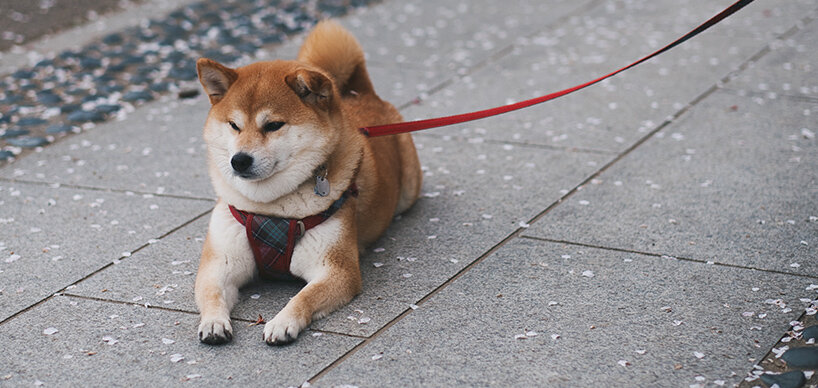
Today, it is the most popular dog in Japan. His lovable nature and big, round eyes are certainly not entirely innocent in this popularity. Additionally, this dog has a special feature: the "Shiba scream." If something displeases him, excites him, or if he is very happy, the dog emits a piercing scream. This can happen when the owner comes home, during grooming, or at the vet's. The independent Shiba Inu hates nothing more than being touched against his will. Now, that's character!
His northern brother is the Hokkaido Ken, also a Japanese spitz. Since he was the dog of the Ainu, the indigenous people of Japan on the northern island, he, like the Husky, is accustomed to harsh winters. Not only his dense fur and robust stature with a shoulder height of about 50 cm but also his courage helped him survive while hunting deer and even bears. The Hokkaido dogs probably share the same ancestors as the Chinese Shar Pei and the Chow-Chow, as indicated by the black spots on their tongues. They need a clear hierarchy in their family and like to assert themselves. Therefore, living with children is not so easy unless they have grown up with them since puppyhood. They also need to be introduced to other pets from the beginning, or else they may perceive them as prey!
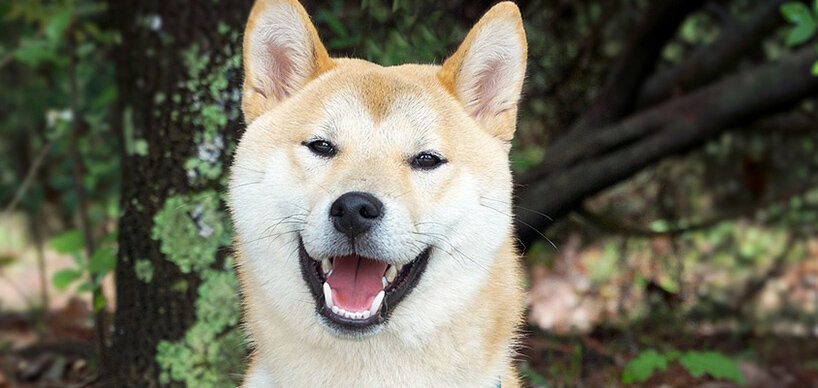
His larger relative, the Kishu Ken, looks similar to him with dense fur and a strong body. The external difference lies in the narrower face and mostly white fur. He is also more compatible with younger family members. Nevertheless, the Kishu needs a strong reference person to whom he will be loyal for a long time. He carefully selects whom to trust and which commands to obey—a very intelligent breed. As an attentive watchdog and a cold-resistant animal, he is well-suited as a guardian of home and property.
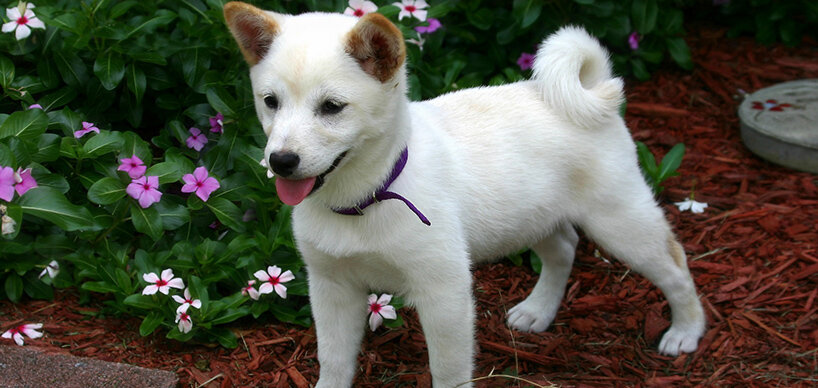
The outsiders among the Japanese dog breeds
Not all dogs from Japan belong to the type of Japanese Spitz with their breed characteristics. Exceptions include the Japanese Chin, the Japanese Terrier, and the Tosa. All three are rather rare, even in Japan, and are not part of the national natural monument like the other breeds. What breeds are included and protected is determined by the Nihon Ken Hozonkai – the "Association for the Preservation of the Japanese Dog." However, there are many reasons why these breeds are still lovable and worth preserving.
The Japanese Chin, like the Akita, belonged to the nobility – but more as a lap dog. His name suggests that he originally comes from China, but his origin is not precisely known. Instead, it is known that he was once intended as a gift for the imperial family. Unlike the other dogs, the Chin had only one "function": looking cute. His funny, squinting face with the short snout and huge ears is like that of a Pekingese, his clean and independent behavior is more like that of a cat. But other dog breeds from Japan are very clean and easy to care for and even known to sometimes groom themselves like cats. The smallest of the Japanese dogs – only about 20 cm tall – is rather calm and does not need much space and exercise. However, he also does not want to be a handbag dog, as the Japanese Chin has a mind of his own.
The Japanese Terrier, on the other hand, looks quite different from his "countrymen": an elegant, slim, and small dog with short fur, who is very lively and appreciates being close to his family. With its 20 to 30 cm shoulder height, it is not much larger than the Japanese Chin. Usually, it is predominantly white with a black head. Apart from its penchant for playfulness, making it a great playmate for children, it is obedient and friendly. As a direct descendant of the Fox Terrier, which came from the West to Japan, this breed emerged through crossbreeding with smaller dogs in the 19th century.
In contrast, the Tosa Inu is the largest Japanese dog breed and is well-suited as a guard dog. It has short, often brown fur, drooping ears, and a very calm character, which still requires an experienced owner. Today, the strong, up to 80 cm tall and 60 kg heavy, mastiff-like dog is often used in dog fights. These are a tradition in Japan and legally allowed. They are particularly popular in rural areas and are subject to strict rules: if one of the dogs barks or whines, or if it no longer wants to fight, the round is over. Officially, every dog has survived the "dog sumo" so far. The Tosa is banned as a fighting dog in many countries, while in some places, it can only be kept to a limited extent as a restricted breed.
Wolf, tiger or dog?
In the past, Japanese dog fights were not bloody but more restrictive, resembling a silent ritual where the dogs were not allowed to attack each other. Instead of the Tosa Inu, another dog breed participated: the Shikoku Ken. As the name suggests, this dog breed comes from the southwestern Shikoku, the smallest Japanese island. This dog is usually darker than the other breeds and not only in color resembles a wolf. Its shoulder height ranges between 40 and 56 cm.
Formerly a hunting dog, the Shikoku Ken has evolved into a loyal companion who will do anything for its owner. Unlike the Akita, this dog is easier to train. Thanks to its hunting instinct, however, one must be careful when smaller animals are around. The highly active and agile Shikoku needs to be adequately engaged and is an excellent candidate for athletic disciplines for both human and dog – for example, agility, where hurdle courses must be mastered. In the past, there were Shikoku dogs that roamed semi-wild in the Japanese mountains, hunting small game, which is why they still carry the desire for freedom and a connection to nature within them.
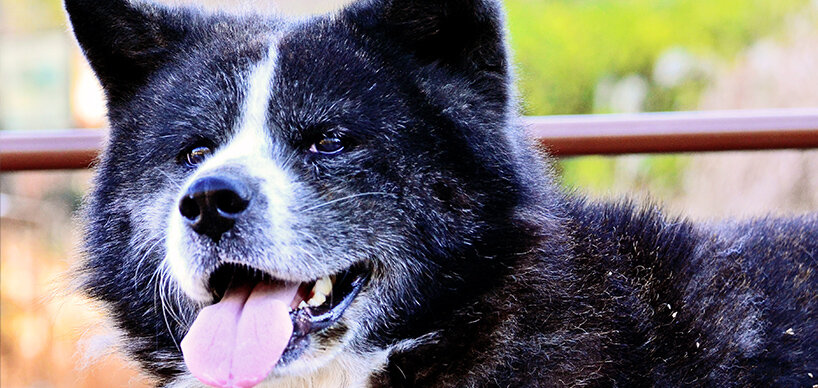
Picture credits: Author: Toshihiro Gamo | Flickr | License
While the Shikoku Ken resembles a wolf, the Kai Ken is also known as the Tiger Dog (Tora Inu). Its characteristic stripes usually become apparent later in life when the dog is already a few years old. Like almost all other breeds, the rare Kai is a natural-born hunter – and a skilled one at that. As a clever climber – the Kai Ken can even ascend trees! – and an intelligent, trainable partner, few can match him quickly. He feels truly comfortable only with enough physical and mental stimulation.
Japanese dogs are animals of character
Aside from their appearance, all Japanese breeds share their loyalty to the owner and, at the same time, their independence. Once you have gained the trust of a Japanese dog, you have a companion for life, and it will never be boring. However, their personalities also differ from breed to breed. Want to know which one is best as a pet for you?
- Akita Inu: a large, independent yet incredibly loyal Spitz-type companion that was once kept as a hunting dog at the imperial court. The most famous Akita was Hachiko, who elevated the Japanese Akita Inu to a symbol of loyalty.
- Japanese Chin: the smallest, cuddly, and friendly Japanese breed is a great family dog and is content with less exercise.
- Japanese Terrier: the perfect companion for active people and children, always ready to play and learn new things.
- Hokkaido Ken: as a former hunting dog, it has a thick coat and is very dominant. Therefore, it needs consistent training and owners who can assert themselves.
- Kai Ken: the dog that looks like a tiger is very skillful and clever – its owner should be prepared to spend time utilizing these traits.
- Kishu Ken: those looking for a reliable and resilient protector make the right choice with the Kishu Ken. However, you need to earn the obedience of the intelligent Kishu first.
- Shiba Inu: the most popular Japanese dog with a round face and a big smile is the little brother of the Akitas. The Shiba is known as a drama queen.
- Shikoku Ken: its pronounced hunting instinct and desire for freedom make it an exciting breed, but it forms a good team with its human.
-
Tosa Inu: the Tosa is only suitable for an experienced owner as a "fighting dog." Behind its size and strength, there is a gentle nature and an adorable character.
Even though dogs have breed-specific characteristics, each dog has its own personality and imprinting. Good training can turn a "dangerous" animal into a loving family member – and vice versa. Interestingly, the Akita Inu is also listed as a dangerous dog in some countries due to its strength, strong instincts, and background as a hunting and fighting dog. Hard to believe when you look into the loyal face of Hachiko.
If you are curious about Japanese dogs, start by checking out local animal shelters or rescue organizations. Before getting a puppy from a breeder, you might find a loving female or a friendly male who desperately needs a new home – and will become a grateful and devoted companion.











-from-the-yakiyaki-grill-pan.jpg)




